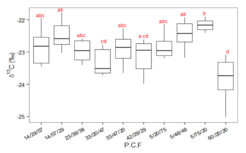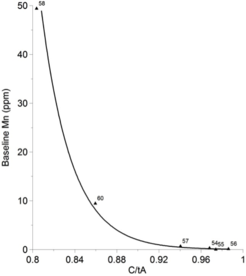Multi-Proxy Approaches to the Reconstruction of Past Human Lifeways
Traditional stable isotope approaches to the reconstruction of diet or mobility have commonly relied on carbon, nitrogen, oxygen, and strontium isotopic measurements. Although these isotopic approaches have provided important archaeological insights into the lifeways of past populations some limitations have also become evident. In some instances it is not possible to separate the contributions of different food groups given isotopic overlaps. Furthermore, bone collagen carbon and nitrogen stable isotope measurements only inform on the relative sources of protein whereas other dietary estimates would also be of interest (e.g. caloric contributions from foods groups, relative contributions from different nutrients). Stable carbon measurements of bone carbonate provide estimate of relative caloric contributions. However, these estimates may be inaccurate given the propensity of bone carbonate to contamination by soil carbonates. Another source of inaccuracy in diet reconstruction is the employment of approximate dietary routing models. In this respect, although dietary protein is the main carbon source of bone collagen this also receives contributions from dietary carbohydrates and lipids. A final limitation of current isotopic approaches is that these only quantify relative contributions and not absolute dietary contributions.
To expand the variety of estimates that can be obtained from isotopic proxies, improve estimate precision, and the reliability of estimates a research programme is being followed consisting of the following key elements:
- Enlargement of the number of dietary proxies employed in lifeways studies. For instance, routinely perform carbon and nitrogen stable isotope measurements of single amino acids.
- Implement quality criteria to assess the reliability of isotopic measurements. In the case of assessing the degree of preservation of bone bioapatite carbonate this includes the use of measurement of trace elements.
- Quantify diet-to-consumer isotopic offsets and dietary routing mechanism through feeding experiments in humans and other mammals (e.g. mice, pigs).
- Use of Bayesian models for the reconstruction of past lifeways. These models should be able to handle complex dietary routing mechanisms and generate multiple dietary estimates.
The figure below shows how bone collagen carbon stable isotope signals of mice from a controlled feeding experiment vary in function of nutrient contributions. This demonstrates that carbon from dietary carbohydrates and lipids is also routed towards mammalian bone collagen.

Relationship between macronutrient intakes (Protein, Carbohydrates, Fat) and bone collagen stable carbon isotope signals of bone mice.
Among the approaches to improving the reliability of bone carbonate stable carbon or oxygen measurements is the introduction of measurements of trace elements as a quality of preservation criterion. The figure below shows the relationship between radiocarbon measurements of bone collagen and bioapatite (C/tA = 1 represents perfect agreement) and the levels of manganese within the interior of a bone. Through this radiocarbon approach it is possible to establish the relationship between Mn levels and the uncertainty that should be associated to bone carbonate stable carbon or oxygen measurements. This information can be easily employed in Bayesian models to reconstruct diet or mobility.

Relationship between agreement of bone collagen and bioapatite radiocarbon measurements (C/tA) and manganese baseline concentration values.
Related Publications
Fernandes, R., Hüls, M., Nadeau, M.J., Grootes, P.M., Garbe-Schönberg, C.D., Hollund, H.I., Lotnyk, A. and Kienle, L., 2013. Assessing screening criteria for the radiocarbon dating of bone mineral. Nuclear Instruments and Methods in Physics Research Section B: Beam Interactions with Materials and Atoms, 294, pp.226-232.
Wang, J., Linnenbrink, M., Künzel, S., Fernandes, R., Nadeau, M.J., Rosenstiel, P. and Baines, J.F., 2014. Dietary history contributes to enterotype-like clustering and functional metagenomic content in the intestinal microbiome of wild mice. Proceedings of the National Academy of Sciences, 111(26), pp.E2703-E2710.

